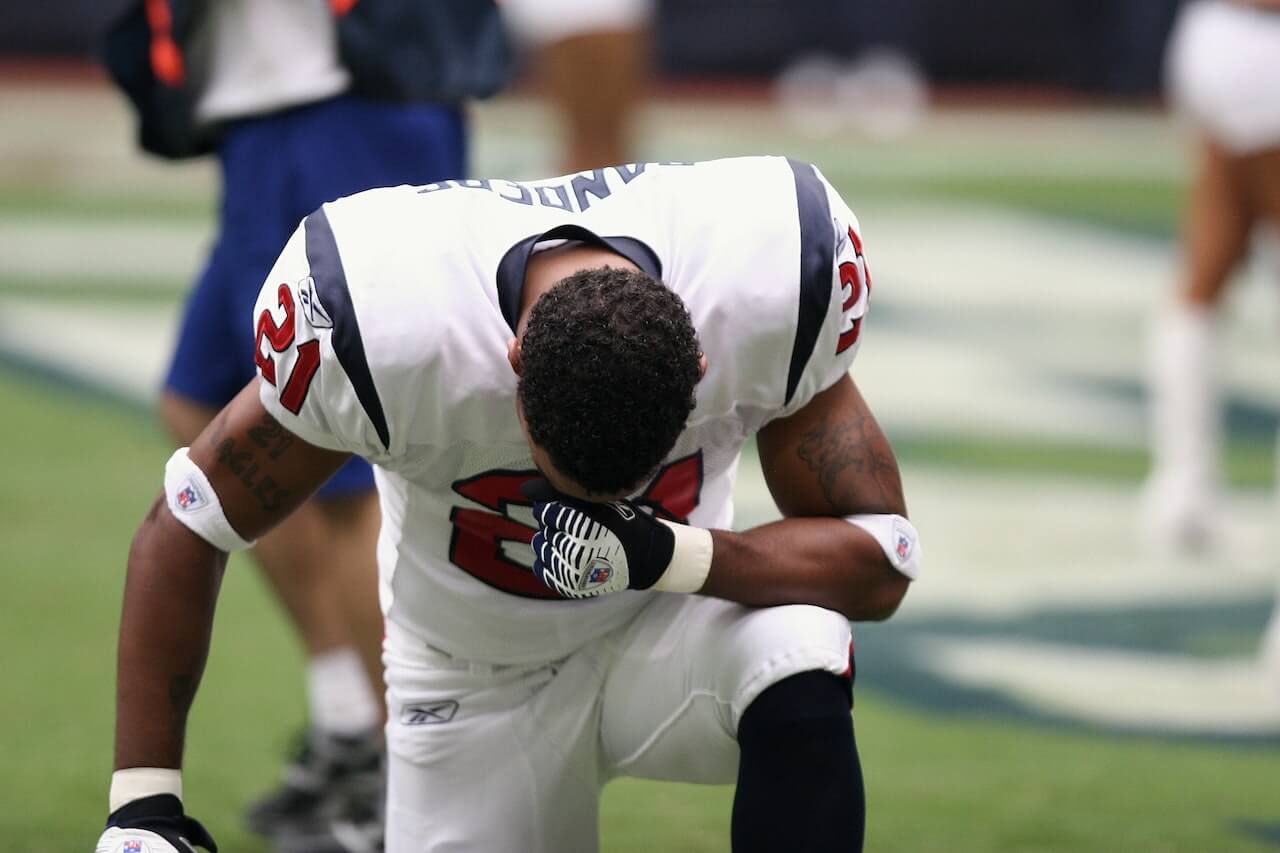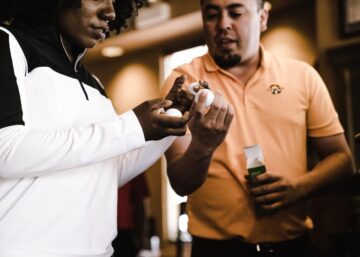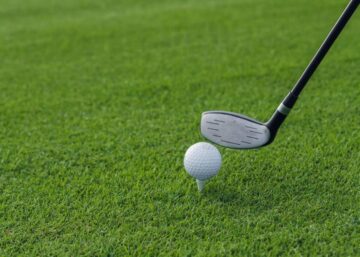Football is a sport that requires a lot of physical exertion and agility. The players’ feet and ankles are under constant stress as they run, jump, and change direction on the field. Injuries to the ankle are common among footballers, and one of the most frequently injured areas is the ankle joint.
The ankle joint is made up of three bones: the tibia, the fibula, and the talus. It is a complex joint that allows for a wide range of movement, but this also makes it more susceptible to injury. Footballers are particularly vulnerable to ankle sprains, which occur when the ligaments that connect the bones are stretched or torn. Ankle sprains can range from mild to severe, and can lead to chronic pain and instability if not properly treated.
Anatomy of the Ankle Joint
The ankle joint is a complex joint that connects the leg to the foot. It is composed of three bones: the tibia, fibula, and talus. The tibia and fibula are bones in the leg, while the talus is a bone in the foot. The ankle joint is responsible for the up-and-down movement of the foot, allowing us to walk, run, jump, and perform other activities.
The ankle joint is a synovial joint, which means it is surrounded by a joint capsule filled with synovial fluid. The synovial fluid lubricates the joint, reducing friction and allowing for smooth movement. The ankle joint is also supported by ligaments, which are strong bands of tissue that connect bone to bone. The ligaments of the ankle joint help to stabilize the joint and prevent excessive movement.
The ankle joint is made up of three main parts: the tibiofibular joint, the talocrural joint, and the subtalar joint. The tibiofibular joint is the joint between the tibia and fibula bones, while the talocrural joint is the joint between the tibia, fibula, and talus bones. The subtalar joint is the joint between the talus and calcaneus bones. These three joints work together to allow for the movement of the foot and ankle.
The ankle joint is also home to several muscles that help to move the foot and ankle. These muscles are divided into two groups: the extrinsic muscles and the intrinsic muscles. The extrinsic muscles are located in the leg and attach to the foot and ankle bones, while the intrinsic muscles are located within the foot and attach to the bones of the foot. These muscles work together to allow for the movement and stabilization of the ankle joint.
Causes of Footballer’s Ankle
Footballer’s ankle is a common injury that affects many football players. It is caused by a variety of factors, including:
- Overuse: Footballers are prone to overuse injuries due to the repetitive nature of the sport. Overuse injuries can occur when a player performs the same movements repeatedly, causing stress on the ankle joint and surrounding muscles.
- Impact: Footballers are also at risk of ankle injuries due to the high-impact nature of the sport. Ankle injuries can occur when a player lands awkwardly or collides with another player, causing damage to the ankle joint.
- Incorrect footwear: Wearing the wrong type of footwear can also contribute to footballer’s ankle. Shoes that do not provide adequate support or traction can increase the risk of ankle injuries.
- Playing surface: The playing surface can also play a role in the development of footballer’s ankle. Playing on hard or uneven surfaces can increase the risk of ankle injuries.
It is important for footballers to take steps to prevent footballer’s ankle. This can include:
- Wearing appropriate footwear that provides adequate support and traction
- Performing regular ankle strengthening exercises
- Ensuring proper technique when performing football-specific movements
- Playing on appropriate playing surfaces
By taking these preventative measures, footballers can reduce their risk of developing footballer’s ankle and continue to play the sport they love.
Symptoms and Diagnosis
Footballer’s ankle is a common injury that can cause significant discomfort and impact an athlete’s performance. In this section, we will discuss the symptoms and diagnosis of this condition.
The most common symptom of footballer’s ankle is pain on the outside of the ankle joint. This pain may be present during activity or at rest and may worsen over time. Swelling and tenderness may also be present in the affected area.
To diagnose footballer’s ankle, a doctor will typically perform a physical exam and take a medical history. Imaging tests, such as X-rays or MRI scans, may also be ordered to confirm the diagnosis and rule out other conditions.
During the physical exam, the doctor may perform a series of tests to assess the range of motion in the ankle joint and check for signs of instability. They may also apply pressure to the affected area to check for tenderness or swelling.
If footballer’s ankle is suspected, imaging tests may be ordered to confirm the diagnosis. X-rays can help rule out fractures or other bone injuries, while MRI scans can provide a more detailed look at the soft tissues in the ankle joint.
In some cases, a doctor may also perform a diagnostic injection to help confirm the diagnosis. During this procedure, a numbing medication is injected into the affected area to see if it provides pain relief.
Overall, early diagnosis and treatment of footballer’s ankle is important to prevent further damage and ensure a full recovery. If you are experiencing symptoms of this condition, it is important to seek medical attention as soon as possible.
Treatment Options
When it comes to treating footballers’ ankle, there are several options available. The severity of the injury will dictate which treatment option is best suited for the player.
Here are some of the most common treatment options:
- Rest: Resting the ankle is the first step in treating footballers’ ankle. This means avoiding any activity that puts pressure on the ankle, such as running or jumping.
- Ice: Applying ice to the affected area can help reduce swelling and inflammation. Players should apply ice to the ankle for 15-20 minutes at a time, several times a day.
- Compression: Wearing a compression bandage can help reduce swelling and provide support to the ankle.
- Elevation: Elevating the ankle above the heart can help reduce swelling and improve blood flow to the area.
- Physical Therapy: In some cases, physical therapy may be necessary to help players regain strength and flexibility in the ankle.
- Surgery: In severe cases, surgery may be necessary to repair the damaged ligaments and tendons in the ankle.
It’s important for players to work closely with their medical team to determine the best course of treatment for their injury. With proper treatment and rehabilitation, most players are able to make a full recovery and return to the field.
Preventive Measures
Preventing ankle injuries is key to ensuring footballers can stay on the pitch and perform at their best. Here are some preventive measures that can be taken:
- Wear Proper Footwear: Wearing proper footwear with ankle support is essential for preventing ankle injuries. Football boots with ankle support can help prevent ankle sprains and other injuries.
- Warm-Up and Stretch: Warming up and stretching before a game or training session can help prevent ankle injuries. It is important to stretch the muscles in the legs, calves, and ankles to reduce the risk of injury.
- Strengthen Ankles: Strengthening the muscles around the ankles can help prevent ankle injuries. Exercises like ankle circles, calf raises, and heel drops can help improve ankle strength and stability.
- Use Braces or Tape: Some footballers may benefit from using ankle braces or taping their ankles to provide additional support and stability during games and training sessions.
- Practice Proper Technique: Footballers should practice proper technique when running, jumping, and changing direction to reduce the risk of ankle injuries. Coaches should also teach proper technique to their players.
- Rest and Recover: Resting and allowing time for injuries to heal is crucial for preventing further damage. Footballers should also follow a proper recovery plan to ensure they are fully healed before returning to the pitch.
By following these preventive measures, footballers can reduce the risk of ankle injuries and stay on the pitch for longer periods of time. It is important to prioritize injury prevention to ensure players can perform at their best and avoid unnecessary time on the sidelines.







